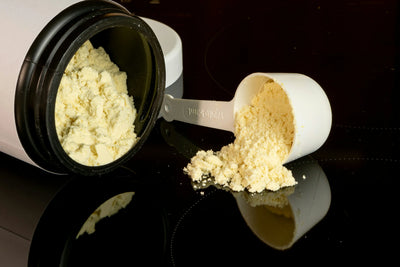Introduction
Joint problems are often a gripping topic when we talk about the health of our dogs. Whether it's an older dog hobbling due to the passing of years or an active little one who has been injured in an accident and has limited mobility, joint disorders always leave owners feeling helpless.
Adequan for Canine Joint Disease: Dosage, Administration, and Precautions
Adequan (Polysulfated Glycosaminoglycans, or PSGAG for short), an injectable drug designed for dogs, is bringing hope of renewed vitality to countless fur kids with its unique mechanism of action. It not only relieves the symptoms of non-infectious degenerative arthritis or traumatic arthritis, but also slows down the progression of the disease to a certain extent. Today, we're going to talk about every aspect of this “joint guardian,” from uses to applications to the little details that need to be kept in mind, in the hope that we can provide a practical and thoughtful guide for dog owners.

1. The Magical Use of Adequan
Joint diseases in dogs are not uncommon, especially degenerative joint diseases (such as osteoarthritis) and traumatic arthritis. These problems are often accompanied by pain, stiffness and reduced mobility, making our little friends who used to love to run and jump cautious. Adequan comes in like a gentle restorative, helping dogs get back their old flexibility by reducing the inflammatory response within the joints, promoting self-healing of cartilage and increasing the lubrication of joint fluid. Imagine how much faster your dog can walk when the inflammation subsides, the cartilage recovers, and the joints don't creak like rusty hinges. That's the beauty of Adequan - it's not just about symptomatic relief, it's about getting to the root cause of joint health.
For older dogs with osteoarthritis, Adequan acts as an invisible crutch to help them continue to enjoy their walks, while for younger dogs with joint injuries caused by jumping or bumping, it's a timely “fix-it” solution to get them out of pain as soon as possible. In either case, this medication is a powerful scientific tool to show us that our dogs deserve to live a happy life, and that they deserve to be protected by us.
2. How to Use Adequan
When it comes to medication, precision and regularity are key, and Adequan is administered intramuscularly, which means it needs to go directly into your dog's muscle tissue in order to work. The recommended dosage is 2 mg per pound of body weight (equivalent to 4.4 mg per kilogram of body weight), which, when converted to a volume of medication, is about 0.02 ml per pound of body weight, or 1 ml per 50 pounds of body weight. Sound a little complicated? It's actually quite simple. For example, a 25-pound dog would need 0.5 milliliters per injection, while a large 100-pound dog would need 2 milliliters. The exact dosage is of course still subject to your veterinarian's advice; after all, every dog is different and has a different condition.
The frequency of administration is usually twice a week for four weeks, for a total of eight injections. This program is like a month-long “joint-repair marathon,” a gradual progression that steadily improves the condition of your dog's joints. As for injection sites, common choices include the quadriceps on the front of the thighs, the psoas major on the lower back, the triceps on the back of the front legs, and the hamstrings on the back of the thighs. These muscular areas are not only easier to maneuver, but also allow for better absorption of the medication. However, this injection thing is not just a random needle, it is recommended to be done by a veterinarian or a trained professional, after all, the comfort and safety of your dog always comes first.
3. Precautions for Use
Every medication has its own temperament and Adequan is no exception. Although it is safe and effective in most cases, it is important to be careful when using it. First, there are the possible side effects: some dogs may experience mild pain and discomfort at the injection site, while a few may experience diarrhea, vomiting, or even unusual bleeding. The good news is that these side effects are usually mild and don't last long. If your dog doesn't seem quite right after the injection, it's a good idea to keep an eye on them and contact your veterinarian promptly if necessary.
Secondly, there are some dogs that can't use Adequan. For example, those dogs with bleeding disorders (such as hemophilia) or allergies to polysulfated glycosaminoglycans will have to steer clear of this medication. Additionally, if your dog's kidney or liver function is not optimal, it should be used with extreme caution, preferably under the close supervision of a veterinarian. After all, the premise of health is to “treat the dog”, not to use drugs blindly.
Adequan also has its own “little requirements” when it comes to storage. It should be stored at room temperature between 20°C and 25°C (i.e. 68°F and 77°F) and should never be refrigerated. Once you've opened the bottle, remember to use it up within 28 days or its effectiveness may be reduced. By keeping these details in mind, you'll be able to keep Adequan in top condition at all times, protecting your dog's joints.
4. Results and Expectations
When will I see results with Adequan? Generally speaking, within a month after the injection, your dog's joint mobility will improve significantly. You may notice that they walk less stiffly, feel more confident walking up and down stairs, and even run to fetch toys to play with you. The changes are slow in coming, but they are solid and long-lasting, like a deep “maintenance” of the joints.

Don't worry if your dog's symptoms creep back in after a while. As soon as your veterinarian evaluates your dog's joints and feels it's appropriate, you can repeat the entire course of treatment to keep your dog's joints active. After all, joint health is a long-term project, and Adequan is just one reliable partner in that journey.
Overall, Adequan is a trusted remedy for joint disease. It uses science to support your dog's joints, allowing them to find relief from pain and stiffness. But even the best medicine cannot be used without the professional guidance of a veterinarian and the careful care of the owner. Strict adherence to dosage and frequency of use, as well as attention to the dog's reaction, is the only way to maximize the value of this “gift to the joints”.
As dog owners, we all want our dogs to run, jump and enjoy every sunny day without worry. Adequan is an extension of that hope - it not only heals the joints, it also heals our concern for our dogs' health. Let's work together with our veterinarians to protect our dogs every step of the way!
Adequan (PSGAG) in Canine Joint Disease Management
Adequan (Polysulfated Glycosaminoglycans, or PSGAG) is a joint therapy medication designed specifically for dogs and is widely used to relieve the discomfort associated with non-infectious degenerative or traumatic arthritis. For many dog-owning families, it is always heartbreaking to see their beloved dogs slowing down or even limping due to joint pain, and Adequan offers a ray of hope for these furry companions to get back on their feet. However, the use of this drug is not arbitrary, but requires precise dosage, scientific administration and careful observation. Today, let's talk about how to properly use Adequan to take better care of your dog's joint health.
1. Recommended Dosage: Scientific Calculation, Customization
The first thing to be clarified when using Adequan for dogs is the dosage. Veterinarians usually prescribe it based on your dog's weight, and the recommended dose is 2 milligrams per pound of body weight (2 mg/lb), or converted to international units, 4.4 milligrams per kilogram of body weight (4.4 mg/kg). If you're more accustomed to understanding it in terms of the volume of the medication, that's 0.02 milliliters per pound of body weight (0.02 mL/lb), or, to be more blunt, 1 milliliter per 50 pounds of body weight (1 mL/50 lbs). For example, if your dog weighs 25 lbs, then a single injection would be about 0.5 mL; if he's a big 50 lb guy, it would be exactly 1 mL.
This dosage design is not arbitrary, but has been scientifically researched and clinically proven to ensure that the medication works effectively on the joints without overburdening your dog's body. After all, every dog has a different body type and condition, and accurate dosage is the first step to successful treatment.

2. Dosing and Duration: Patience is Key
Adequan is unique in that it can only be administered by intramuscular injection. This means that you can't simply shove it into your dog's mouth like you would a pill, but instead you need to inject the drug into the muscle tissue with the help of a needle. It may sound a little scary, but when done properly, your dog's pain is actually quite limited.
At the beginning of treatment, Adequan is usually given twice a week for four weeks, up to a total of eight injections. This is a “concentrated attack” period when the medication is working, designed to quickly relieve the pain and inflammation associated with arthritis. If all goes well, you may find that your dog's stride becomes lighter and he may even be willing to run after the ball again. However, arthritis is a chronic condition and symptoms can come back after a period of time. If your dog shows pain or lameness again, your veterinarian may recommend repeating the entire course of treatment. Of course, this should all be done under professional guidance and never on your own.
3. Considerations for Use: Details Make the Difference
When using Adequan, there are a few details that deserve special attention. The first is the injection site. Common muscle injection sites include the quadriceps on the front of the thigh, the psoas major on the lower back, the triceps on the back of the front leg, and the hamstrings on the back of the thigh. These areas sound specialized, but they are all actually thick and relatively safe areas of flesh on your dog's body. However, there are often important nerves and blood vessels located near these areas, which can cause problems if you're not careful. Therefore, if you are not an experienced “dog parent”, it is best to let the veterinarian to operate, or at least receive a face-to-face training. After all, no one wants their dog to suffer because of a mistake.
Next is the preservation of the medication; Adequan needs to be stored at room temperature between 20° and 25°C (68° and 77°F), and occasionally in the range of 15° to 30°C (59° to 86°F) for short periods of time. Simply put, don't let it freeze and keep it out of the sun. Find a cool, dry cabinet to put it in for easy access and to keep the medicine effective.
As for adverse reactions, while Adequan is generally safe, it's not completely risk-free. Some dogs may experience localized pain after the injection, or minor conditions such as diarrhea, lethargy, or loss of appetite. These are usually temporary and can be recovered with some rest. However, if your dog exhibits an unusually severe condition, such as excessive bleeding, it is important to contact your veterinarian immediately, as this can be a rare but serious side effect.
4. Contraindications and Warnings: Safety First
Although Adequan is a “savior” for many dogs, it is not suitable for all situations. For example, if your dog has a known bleeding disorder, this medication should be avoided. The reason for this is that Adequan's chemical structure is somewhat similar to that of the anticoagulant drug heparin, which can exacerbate bleeding tendencies. Extra care should also be taken with those dogs that don't have very good kidney or liver function, and it's best to get a thorough checkup before taking the medication to make sure that your body can withstand the metabolic process of the drug.
In addition, if your dog is pregnant or lactating, the situation can be even more complicated. There is currently insufficient data on the safety of Adequan in these particular stages, and your veterinarian may recommend temporarily discontinuing it or looking for alternatives. In any case, it's always good to ask for an extra professional opinion when you're unsure of anything.
Adequan is more than just a bottle of medicine, it is a bottle of medicine that carries with it our expectations and care for the health of our dogs. As a treatment for joint disease, its effectiveness has been proven in countless cases. However, medication is never a cure-all; it requires scientific dosage, proper handling, and close observation of our dog's condition to work together.
Imagine when your dog's tail is wagging again because of the relief of joint pain, and when he can happily walk and play with you again, the joy of that moment is indescribable by any words. So, if your dog is facing joint problems, talk to your veterinarian about the possibilities of Adequan. Perhaps that's just the start it needs to get back to living a happy life. And all you, as its family member, can do is to take care of its health with patience and care.
Librela vs. Adequan for Dogs: A Comparative Analysis of Mechanism, Dosage, and Efficacy
As owners, we always feel a pang of sadness when our family dog starts to hobble around with arthritis, making even their favorite walks difficult. The good news is that modern veterinary medicine offers a number of solutions for these furry companions, with Librela (bedimab) and Adequan (polysulfated glycosaminoglycans) being two highly regarded treatment options. While they both aim to help dogs fight arthritis, the mode of action, frequency of administration, and even effectiveness are distinct. Today, we'll talk about the similarities and differences between these two “joint guardians” to help you find the best treatment option for your dog.
1. Mechanism of Action: From Root Cause to Symptom, Each Has Its Own Focus
Let's start with Adequan, a polysulfated glycosaminoglycan (PSGAG), which may sound complicated, but its “workings” are actually quite sweet. It “protects” your dog's joints by inhibiting further cartilage degradation, reducing inflammation in the joints, and improving lubrication. Simply put, Adequan is more of a “master healer” that focuses on protecting and repairing the root cause of joint health. However, it can be a bit “slow” in relieving pain, and it can take some time for your dog to feel truly at ease.
Librela is a monoclonal antibody with a completely different mechanism of action. It “cuts off” pain signaling by blocking NGF (Nerve Growth Factor), directly targeting the discomfort caused by arthritis. Librela is a “pain management specialist,” so to speak, and its specialty is getting dogs out of pain quickly, but it doesn't directly repair the joints themselves. There is a clear division of labor between the two: one treats the root cause and the other treats the symptoms.
2. Frequency of Administration: A Balance of Convenience and Patience
Frequency of administration is a particular concern for many dog owners when choosing a medication, and Adequan's regimen is relatively intensive, especially in the initial stages. It requires two injections per week for four weeks, for a total of eight injections, to complete the initial course. After that, if the dog stabilizes, it can be changed to a monthly maintenance treatment. This pace isn't a problem for owners who are willing to make a few extra trips to the vet's office, but it can be slightly cumbersome for families on a tight schedule.
In contrast, Librela is much more “Buddhist”. From the start, it only requires monthly injections, plain and simple. This low frequency of administration not only reduces the burden on the owner, but also reduces the number of times the dog is “disturbed” by the needle. If your dog is afraid of going to the doctor, or if you have a full schedule, Librela may be more to your liking.
3. Effectiveness and Onset of Action: the Choice Between Fast and Slow
When it comes to results, Adequan and Librela have a different “tempo”, with Adequan usually showing changes such as a steadier stride and greater freedom of movement within 2 to 4 weeks of starting treatment. It is particularly suitable for dogs that need immediate relief, especially when arthritis is just beginning to affect quality of life. However, its “total fix” takes time to build up and the results are more like a constant battle.
Librela is more of a “chronic master”. It can take 1 to 2 months for the full effect of pain relief to be realized, but once it is, dogs tend to enjoy a longer-lasting sense of comfort. This is good news for dogs whose pain has been ongoing for some time and requires long-term management. Which one you choose depends a lot on how soon you want your dog to be able to run and jump happily again.
4. Safety vs. Side Effects: Small Differences in Moderation
Safety is a topic that all pet owners can't get around. The good news is that both medications are generally mild. Adequan doesn't have a lot of side effects, and occasionally you may experience mild pain at the injection site or minor gastrointestinal discomfort, such as loss of appetite or mild diarrhea. These problems are usually not serious and get better with rest.
Side effects of Librela are similarly mild and may include brief drowsiness or indigestion. It's worth noting that because its mechanism of action does not rely on liver or kidney metabolism, Librela may be safer for dogs with kidney or liver problems. If your dog has a “sensitive body”, this may be a key consideration.

5. Cost Considerations: Short-term Investment vs. Long-term Return
When it comes to the wallet, the costs of Adequan and Librela vary; Adequan requires frequent injections during the initial phase of treatment at a cost of about $40 to $80 per injection, which can add up to a lot of money in the first month. Librela is more expensive at around $70 to $120 per injection, but since it's only needed once a month, it may be more cost-effective in the long run. Which one you choose will depend on your budget and your dog's treatment needs.
6. Combined Use: A Double Whammy of Results
Interestingly, Adequan and Librela don't need to be “one or the other”. Many veterinarians recommend combining the two to capitalize on their respective strengths: Adequan to repair joints and improve cartilage health, and Librela for quick pain relief and quality of life. This combination of “inside and outside” treats both the symptoms and the root cause of the problem, especially for dogs with severe arthritis. Of course, the cost and protocol of this combination should be discussed in detail with your veterinarian to make sure your dog can handle it.
7. How to Choose: Tailor-made for Your Dog
So, which one should you choose? The answer is hidden in your dog's specific situation. If he needs quick relief from arthritis, Adequan may be a better “first responder”. If long-term pain management is more important to you and you want to minimize trips to the clinic, Librela is a good companion. For dogs that are intolerant to non-steroidal anti-inflammatory drugs (NSAIDs) or have particularly severe pain, Librela may be even safer and more effective.
Whether it's Librela or Adequan, they're more than just liquids in a pill bottle; they're an extension of our deep love for our dogs. Every dog is unique, and they have different needs, personalities and even reactions to medications. So, before making a decision, it's worth sitting down with your veterinarian and having a good chat to find the best option for your dog, taking into account his age, weight, health, and the pace of your life. After all, no amount of money can replace the feeling of happiness that comes from watching your dog wagging his tail and prancing around the yard again.





